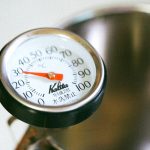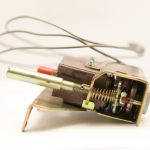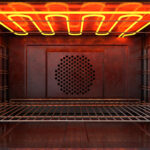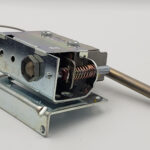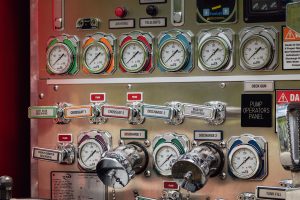 So what is the difference of a Temperature Control (Fan) vs. Limit Switch? Throughout our website we use the verbiage limit and control, or fan. It is not always clear to users what temperature switch to use for certain applications. Even though fan and limit switches are put together in our documentation, in terms of application, there is no relationship between a limit and fan switch.
So what is the difference of a Temperature Control (Fan) vs. Limit Switch? Throughout our website we use the verbiage limit and control, or fan. It is not always clear to users what temperature switch to use for certain applications. Even though fan and limit switches are put together in our documentation, in terms of application, there is no relationship between a limit and fan switch.
Temperature Control (Fan) vs. Limit Switch
Temperature Control (Fan) Switch
A temperature control (fan) switch does just that, it controls! When a temperature change in a system occurs, the switch will trip to control a piece of equipment, such as a fan, to control the environment’s temperature until it falls to reset the switch based on the physical conditions of the environment.
Temperature Limit Switch
The primary purpose of a temperature limit switch is to act as part of a redundant control system that prevents over temperature conditions. If designated as a limit switch it meets approval agency standards for this purpose, commonly by the Underwriter’s Laboratories (UL).
These devices are based on physics and not an electrical scheme or chip set. In more critical heating and cooling applications multiple switches are involved, one being a control and the other being a limit switch. The control switch turns something on and off when a given temperature is reached. Simple examples being a fan when a desired temperature is reached on a wood stove moving the warm air until the temperature has cooled or a compressor to a chiller when your refrigerator gets too warm.
To prevent a critical scenario a second limit switch is also used. The limit is designed to interrupt the critical event so the machine can survive the critical scenario. A classic example is a hot water heater. One control switch will turn the heating elements, on and off, at a set temperature to maintain that temperature. A second limit thermostat switch also be used to prevent the heating element from going into a runaway condition overheating the systems and causing a critical event.
Oftentimes when a temp switch trips on a limit condition, it must stay in that state until the temperature has fallen back into the safe region and a manual reset button is pressed or power is removed.
Any of our STEMCO capillary style switches can be manufactured to meet the fan and limit conditions.

